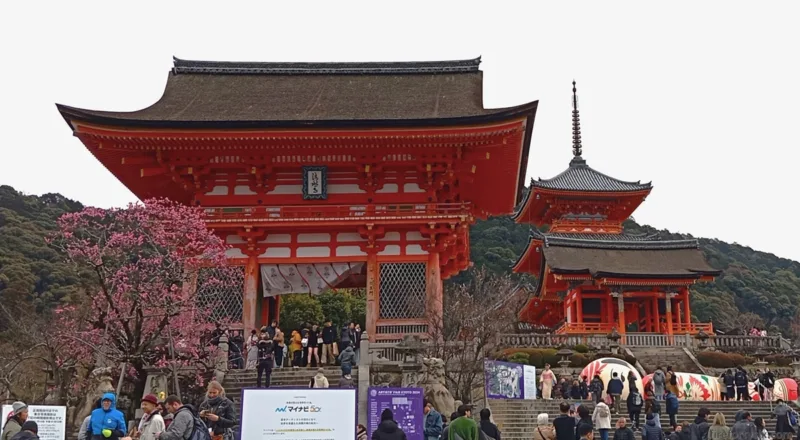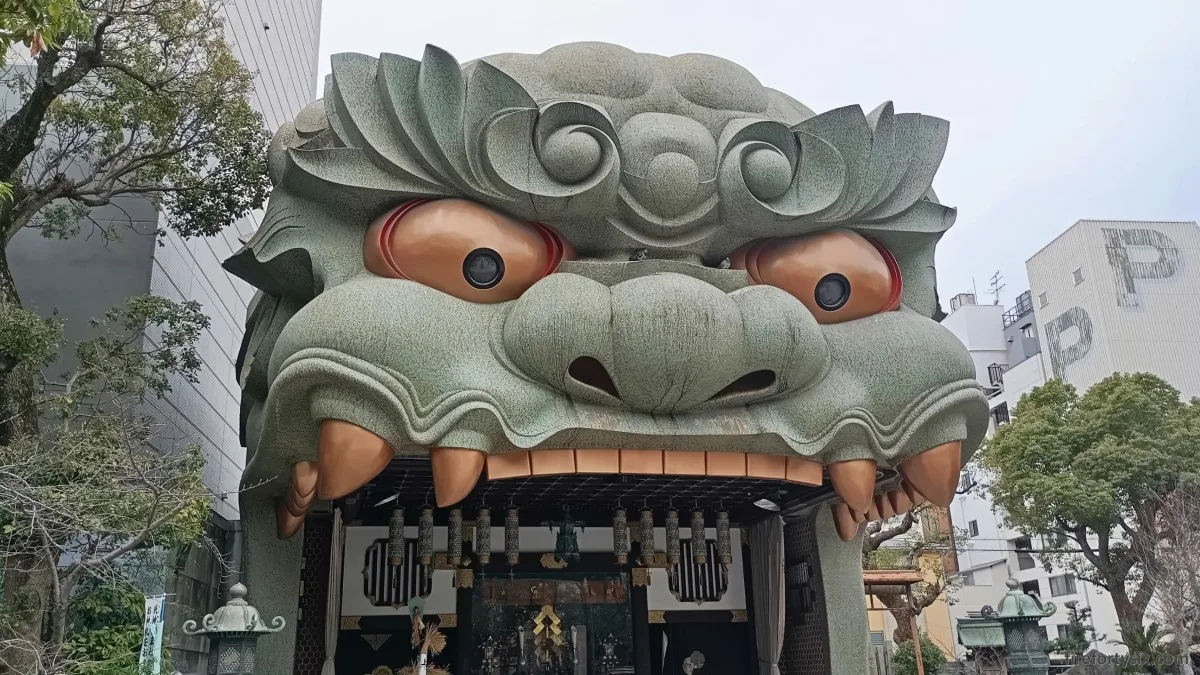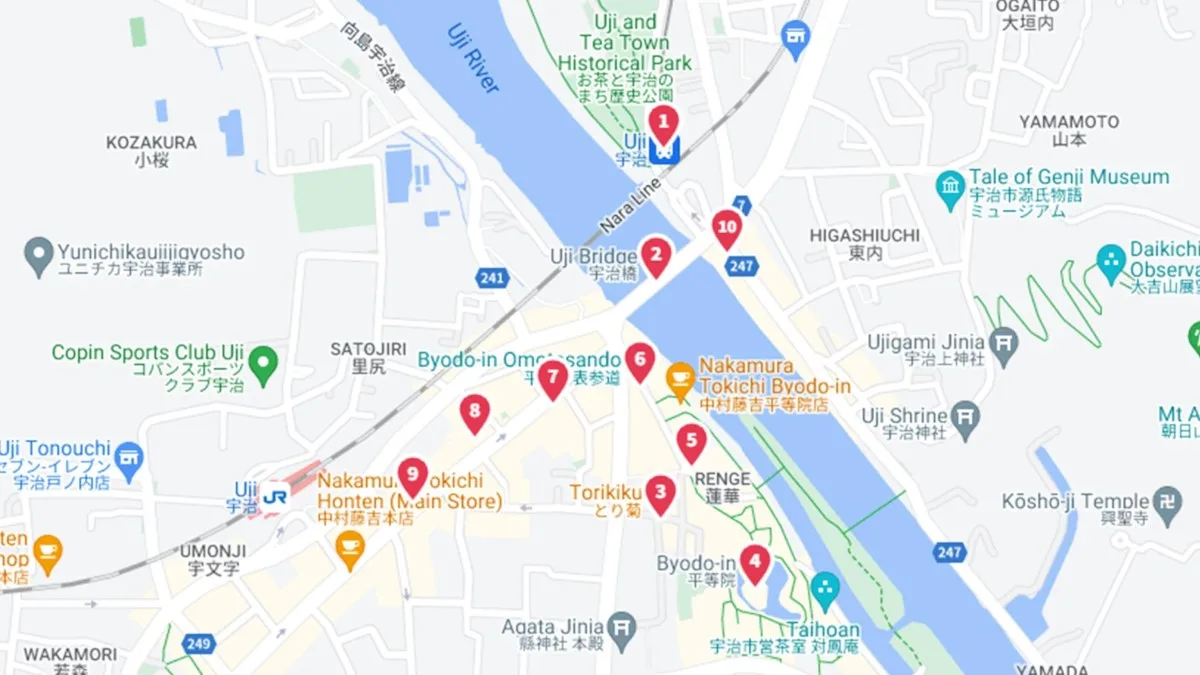After completing our five-hour, 5.7-kilometre “Journey to the North” from Gion to Ginkakuji, our weary feet had sufficiently recovered to attempt another long trek.
This time, we’d be heading down south and making our way to Kiyomizudera temple. En route were Ninenzaka and Sannenzaka, two of Kyoto’s most well-known pedestrian streets.
Although it wasn’t quite peak travel season yet, we were mentally prepared to battle the crowd and wade through throngs of tourists.
Starting in Gion (祇園)
Our starting point was the OMO5 Kyoto Gion hotel, where we were staying for five nights in a pretty 40sqm room with tatami flooring and wooden furniture.
Despite our resolution the night before to wake up bright and early, we ended up sleeping in and having a late breakfast.
By the time we finally made it out the door, it was well past eleven. We assuaged our guilt by reminding ourselves that as long as it was before noon, it was technically still morning.
Three minutes was all it took to reach our first milestone. All we had to do was to cross the street from our hotel and climb up a short flight of stairs.

There are countless Yasaka Jinjas in Japan. A simple search in Google Maps returns numerous candidates from all across Japan, but the one that tops the list is the famous one in Gion.
As expected, it was crowded but bearable. The further we wandered from the central compound, the fewer visitors we encountered.
Since it was just the beginning of our excursion, we only spent half an hour exploring the compound before exiting through one of the side exits.
Down Shimogawa-dori (下河原通)
We followed Shimogawa-dori all the way down towards Yasaka Pagoda, enjoying the beautiful scenery along the way.


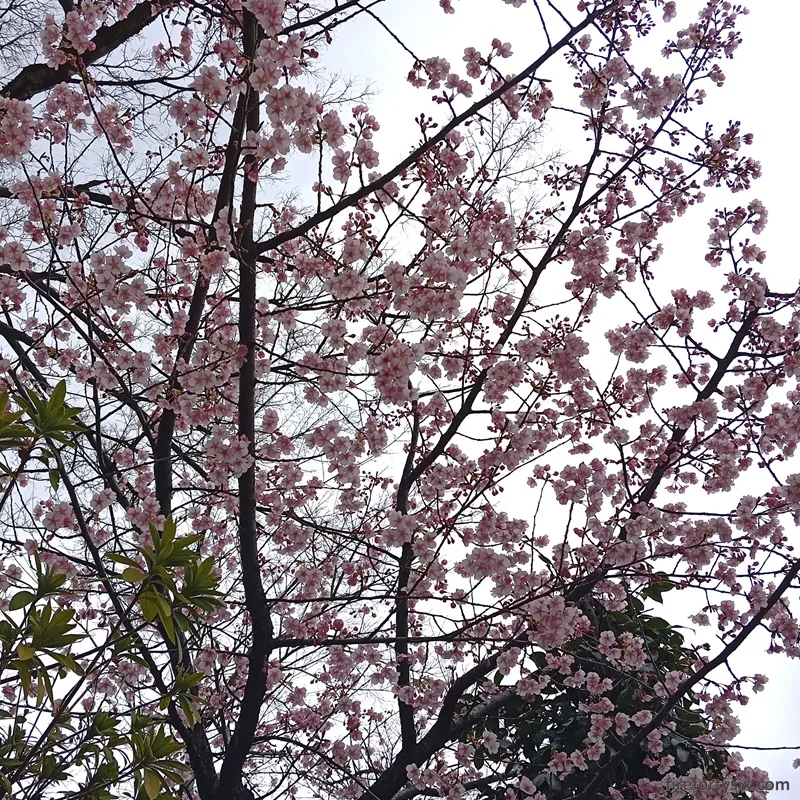

The further we walked, the thinner the crowd became. I started to think that perhaps we’d be lucky and somehow avoid the mad crush of people that I’d been seeing in social media posts.
Just before we reached the end of Shimogawa-dori, we took a left turn and headed towards the huge and unmistakable concrete Kannon statue.
But our intention was not to visit the Ryōzen Kannon Temple (霊山観音). Instead, we were headed towards a totally different objective.

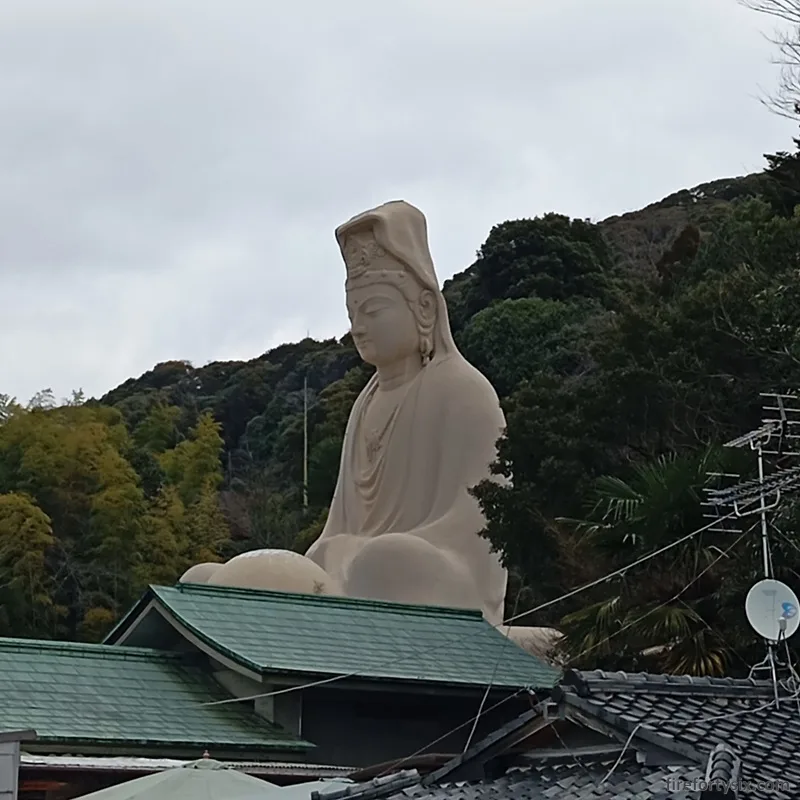
But First, Ghibli
The Wife and I are huge fans of Studio Ghibli. We’ve watched more than a dozen of their full-length movies, visited the Ghibli Museum in Mitaka and own numerous pieces of merch procured over the years.
When I found out that there were two (gasp!) official Donguri Kyōwakoku (どんぐり共和国) stores in close proximity to one another, both became high priority targets.
The first was located at one end of Ninenzaka and while small and compact, it was packed with all sorts of goodies. Especially those from Totoro, the show that first lured us down the rabbit hole.
After spending a blissful half hour browsing the shelves and picking out the souvenirs we wanted to bring home, we retraced our steps and made our way back towards Yasaka Pagoda (八坂の塔).
Where we immediately encountered a sea of people. Judging from the smattering of conversations we couldn’t help but overhear, it was clear that they came from all corners of the globe.
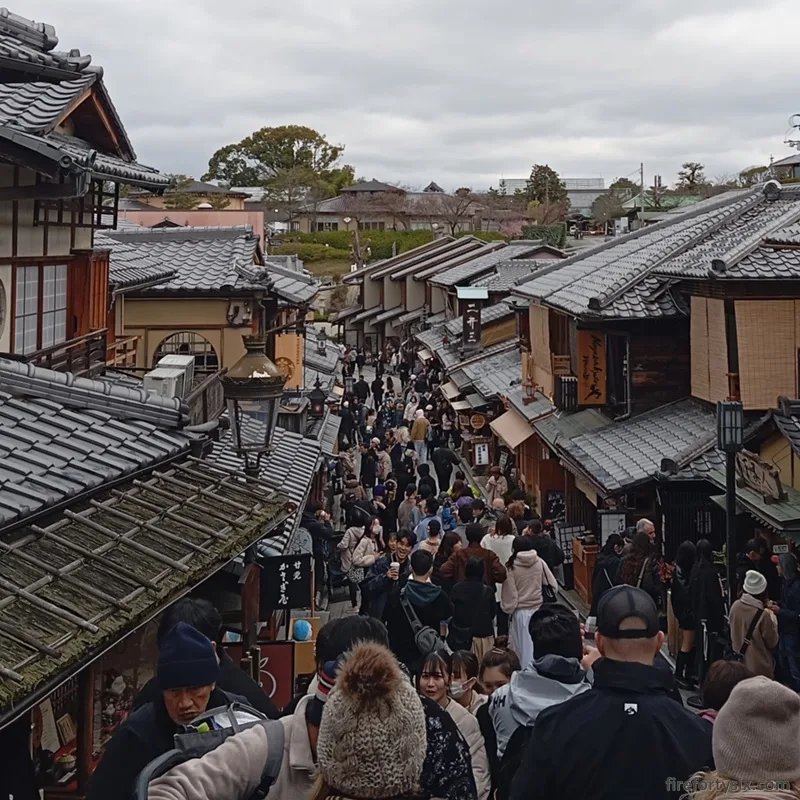

Stopping for Fuel
Our breakfast had sustained us so far, but we were starting to feel a little peckish. That was when we walked past a small Tiffany-blue kiosk selling Japanese potato croquettes.
I have a soft spot for freshly-fried korokkes, and there was no way that I was going to walk past and leave empty handed.
They were just as I had expected: soft on the inside, crispy on the outside and bursting with flavour. Luckily, we each had our own piece, because it would have been quite sad to share just the one.
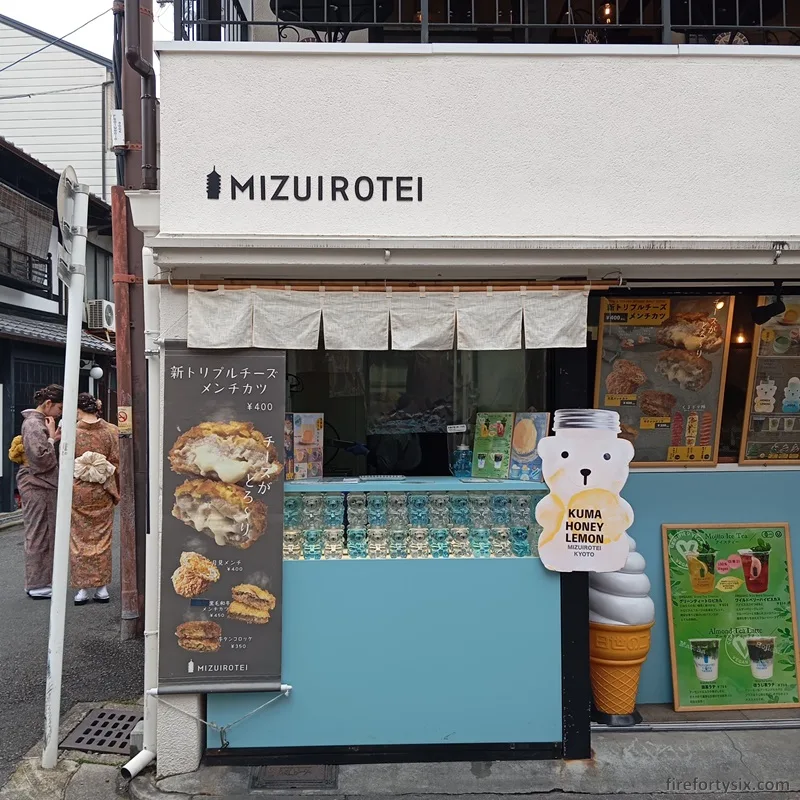



Though satisfying, korokke alone wasn’t going to be enough. We kept our eyes open for a place to have a late lunch and stumbled upon a shop offering a yuba-centric teishoku.
There are plenty of tofu restaurants in Kyoto but very few, if any, that focus only on yuba. I love tofu in all its forms, but my favourite of them all has to be yuba.
We walked in, ordered, and had one of the most interesting meals of our entire trip.
While the eatery itself only opened recently, it was operated by a yuba supplier that was more than a century old. As you can imagine, everything we had was oishii desu.
Ninenzaka (二年坂)
To ward off our post-lunch food coma, we took the long way back to Ninenzaka. Traditional wooden machiyas lined both sides of the historic street, their wares calling out to the unrelenting crowd.


One building was especially popular — a small little coffeeshop you might have heard of, with a name that starts and ends with “S”.
I was curious to see what the fuss was about and managed to wriggle my way in.
Yes, it looked quite different from their other, more generic-looking, cafés. But no, it was not my cup of tea, and I noped out of there.

Sannenzaka (三年坂)
Continuing our walk down Ninenzaka, we soon segued into Sannenzaka, where the famous hundred year-old sakura tree stood.
We didn’t know it then, but it was on its final legs. Barely a month later, it would mysteriously collapse, pinning an unfortunate man in his 60s.

As we slowly climbed up the steps, The Wife paused outside a shop with big bunches of dried chillies hanging in the display.
The weather-beaten wooden signboard was heavily faded, but she found the Japanese hiragana written on it vaguely familiar.
It turned out to be the brand of one of her favourite chilli seasonings, and she grabbed several packets. Not only to replenish her existing supplies, but also to serve as omiyage.




Kiyomizu (清水)
After arriving at the junction between Sannenzaka and Kiyomizuzaka, we had reached the last stretch of our journey.
Once we hiked up the gentle slope, we would reach the gates of Kiyomizudera. But before that, we had to make an important detour to the second Studio Ghibli store to procure more merch.

One block down was another distraction — a local coffee roaster named “here Kyoto”. Their Kiyomizu outpost focused on supplying caffeine to their customers, but I only had eyes for their freshly-roasted coffee beans.
Since it was only a small retail outlet and not their main roasting location, the selection was quite limited. I picked up and 300gm bag of their Guatemala Oriente Natural to brew when I got back home.




The final ascent was the most challenging portion of our expedition. Not due to the steep slope, but because of the high density of warm bodies that we had to push through.
When people say that Kyoto is jam packed with tourists, the path up to Kiyomizudera is exactly what they’re referring to. If you cannot stand crowds, this is not where you want to be.


We finally made it to the temple and were rewarded with, wait for it… even more people. The buildings were grand and the scenery was nice, but I just didn’t feel it.
After a cursory exploration of the grounds, we made our way down.

Walking Route
From start to finish, our journey from OMO5 Kyoto Gion to Kiyomizudera took 4.5 hours, inclusive of a late lunch at Kyo Yuba Mitakyu.
I mapped out the path we took and all the stops we made that day, and Google told us that we had covered a grand total of 2.4 kilometres.
Theoretically, we could have reached the temple in 36 minutes, but we like to take things slow when travelling so this leisurely pace suited us just fine.
Having had our fill of long walks, we spent the final two days in Kyoto exploring our immediate neighbourhood of Gion.
